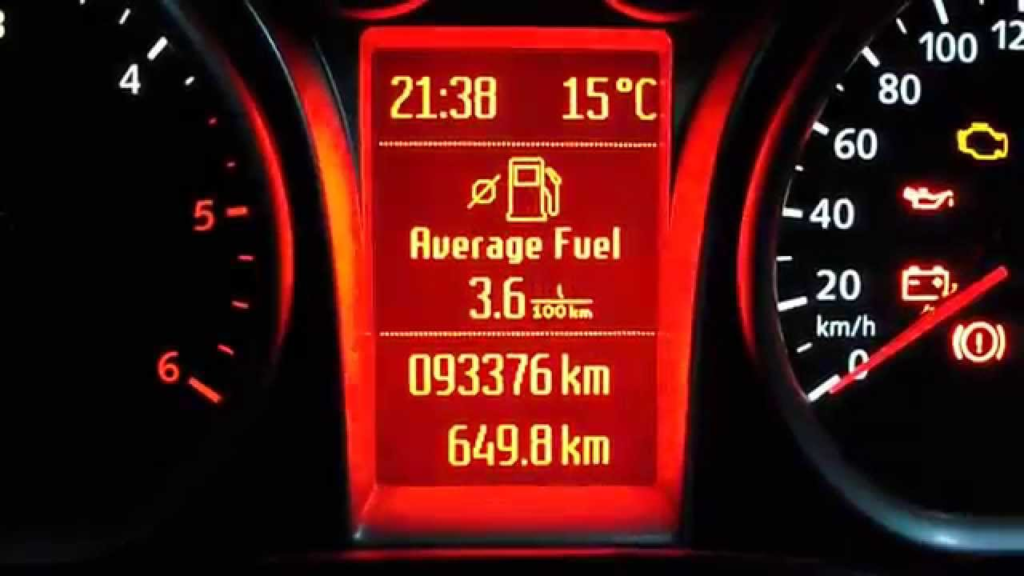Fuel efficiency is a major concern for drivers. Car manufacturers advertise impressive miles per gallon (MPG) figures, but often these numbers don’t quite translate to real-world driving. Enter “realistic fuel consumption,” a concept that has gained traction in online discussions, particularly on platforms like YouTube. But what exactly is realistic fuel consumption, and how can you achieve it with your own car? This article delves into the realistic fuel consumption details, separating fact from fiction and providing insights based on the latest information available.
What is Realistic Fuel Consumption?
Realistic fuel consumption refers to the actual fuel economy you achieve on the road, factoring in various driving conditions and car characteristics. This stands in contrast to the EPA (Environmental Protection Agency) estimated MPG figures displayed on car stickers and manufacturer websites. The EPA figures are determined under controlled laboratory conditions and may not reflect real-world driving scenarios.
Here’s why realistic fuel consumption matters:
Accuracy: Realistic fuel consumption provides a more accurate picture of how much fuel your car consumes. This allows you to budget more effectively for gas expenses and make informed decisions about your driving habits.
Fuel Efficiency Optimization: By understanding realistic fuel consumption, you can identify areas for improvement and adopt fuel-saving driving techniques.
Common Questions about Realistic Fuel Consumption on YouTube
A quick search on YouTube reveals several questions and discussions surrounding realistic fuel consumption. Here are some of the most common queries:
Is the “realistic fuel consumption” setting in truck simulator games accurate?
Games like Euro Truck Simulator offer a “realistic fuel consumption” setting. While this setting aims to reflect real-world fuel usage based on factors like load weight and driving style, it’s not a perfect representation. Real-world factors like weather conditions and specific vehicle models are often not accounted for in these simulations.
How much lower is realistic fuel consumption compared to EPA estimates?
The difference between realistic fuel consumption and EPA estimates can vary depending on several factors. In general, real-world MPG figures tend to be lower than EPA estimates by 5-15%. Aggressive driving, city traffic, and using features like air conditioning can further decrease fuel efficiency.
Can I achieve realistic fuel consumption similar to what reviewers achieve?
Car reviewers often conduct controlled test drives to evaluate fuel economy. While their results can provide valuable insights, it’s important to remember that these tests might not perfectly replicate your daily driving routine. Factors like traffic patterns, road conditions, and even the specific route taken can influence fuel consumption.
Factors Affecting Realistic Fuel Consumption
Several factors contribute to the fuel efficiency you experience on the road. Here’s a breakdown of the key players:
Driving Style: Aggressive driving habits like rapid acceleration, harsh braking, and speeding significantly reduce fuel efficiency. Conversely, smooth acceleration, maintaining a steady speed, and anticipating traffic lights can improve gas mileage.
Traffic Conditions: Stop-and-go city traffic is detrimental to fuel economy. Frequent braking and acceleration in congested areas require more engine power and, consequently, consume more fuel. Highway driving at a constant speed generally yields better fuel efficiency.
Weather Conditions: Extreme weather conditions like cold starts, hot temperatures, and strong winds can impact fuel consumption. Cold weather requires the engine to work harder to reach operating temperature, while hot weather can increase evaporation and reduce gas mileage. Strong winds create drag, forcing the engine to work harder and use more fuel.
Vehicle Type and Features: Larger, heavier vehicles naturally consume more fuel compared to smaller, lighter ones. Additionally, features like all-wheel drive, powerful engines, and automatic transmissions can decrease fuel efficiency.
Cargo Weight: Carrying extra weight in your car puts extra strain on the engine, leading to increased fuel consumption. This includes passengers, luggage, and any cargo you might be transporting.
Vehicle Maintenance: Regular maintenance is crucial for maintaining optimal fuel efficiency. Worn-out spark plugs, dirty air filters, and underinflated tires can all contribute to decreased gas mileage.
Tips to Achieve Realistic Fuel Consumption
Here are some practical tips to help you achieve realistic fuel consumption with your car:
Practice Smooth Driving: Avoid aggressive acceleration, sudden braking, and speeding. Maintain a steady speed whenever possible.
Plan your Trips: Consider carpooling or using public transportation for short trips. Combine errands into one trip to minimize driving time and avoid unnecessary stops.
Utilize Cruise Control: Cruise control helps maintain a constant speed on highways, which can improve fuel efficiency. However, use it cautiously in areas with frequent stop-and-go traffic.
Minimize Idling: Avoid idling your car for extended periods. If you’re waiting for someone, consider turning off the engine if it’s safe to do so.

FAQs
What is a realistic fuel consumption review?
Unlike manufacturer-quoted figures obtained in controlled lab settings, a realistic fuel consumption review reflects actual driving experiences. These reviews come from everyday drivers who track their car’s fuel economy under various conditions.
Why are realistic fuel consumption reviews important?
Manufacturer figures often paint an optimistic picture. Realistic reviews provide valuable insights into a car’s true fuel efficiency under real-world driving scenarios like city traffic, highway cruising, and stop-and-go situations. This can help you make informed decisions about car purchases and running costs.
What factors can affect a car’s real-world fuel consumption?
Several factors influence real-world fuel economy:
Driving style: Aggressive acceleration, harsh braking, and speeding significantly reduce fuel efficiency.
Traffic conditions: Stop-and-go city traffic consumes more fuel compared to highway cruising.
Terrain: Hilly or mountainous roads demand more power from the engine, impacting fuel efficiency.
Weather: Cold temperatures can decrease fuel efficiency by affecting engine performance.
Vehicle load: A car loaded with passengers and cargo will consume more fuel.
Tire pressure: Underinflated tires increase rolling resistance, leading to poorer fuel economy.
Fuel type: Premium fuel can offer slight mileage improvements in some vehicles.
Maintenance: A properly maintained car with clean air filters and correct tire pressure will achieve better fuel efficiency.
How can I find realistic fuel consumption reviews?
Several resources offer realistic fuel consumption reviews:
Car review websites: Many car review websites feature user reviews where owners share their real-world fuel economy experiences.
Fuel economy forums: Online forums dedicated to fuel efficiency discussions can be a treasure trove of real-world data.
Fuel tracking apps: Mobile apps allow users to track their gas mileage and driving habits, providing valuable insights into their car’s real-world fuel consumption.
What should I consider when reading a realistic fuel consumption review?
Not all reviews are created equal. Here’s what to keep in mind:
Reviewer’s driving style: Consider if the reviewer’s driving habits align with yours (e.g., mostly city driving vs. highway commuting).
Vehicle specifications: Ensure the review is for the same car model and engine variant you’re interested in.
Sample size: Reviews with a larger sample size (multiple users reporting) offer a more reliable picture.
How can I improve my car’s real-world fuel consumption?
Several practices can help you achieve better fuel efficiency:
Practice smooth driving: Avoid harsh acceleration and braking.
Maintain a steady speed: Cruise control on highways can help maintain a constant speed and improve efficiency.
Reduce weight: Avoid carrying unnecessary cargo in your car.
Maintain proper tire pressure: Properly inflated tires reduce rolling resistance.
Plan your trips: Combine errands and avoid rush hour traffic whenever possible.
Consider alternative fuels: Explore options like hybrid or electric vehicles for significant fuel savings in the long run.
By understanding realistic fuel consumption reviews and implementing these tips, you can make informed car buying decisions and maximize your car’s fuel efficiency on the road.
To Read More; click here





